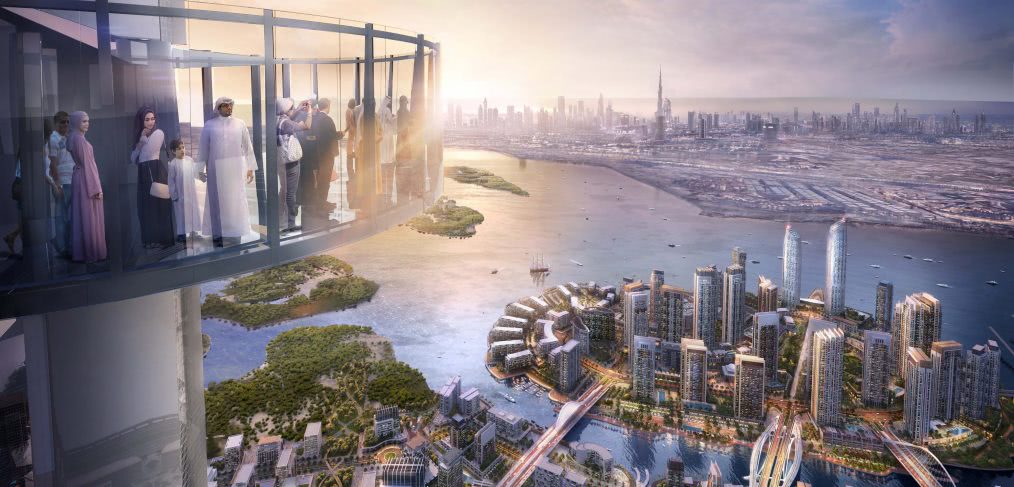
Bold Tech and the Smart City
This post is a recap of recent lecture by CallisonRTKL’s Matthew Tribe delivered as part of the Real Estate Executive Development Program at American University in Cairo. Tribe has also presented to visiting universities, including The Wharton School at University of Pennsylvania, Columbia University and Duke University, on the topic of smart urban development in the Middle East.
In fall 2016, it was announced that the Dubai Institute of Design and Innovation would be established by way of a partnership with Massachusetts Institute of Technology and Parsons School of Design, attracting the world’s most talented young designers at the cost of AED 270 million. On the developer’s side, news of talent acquisition—such as the hire of Veresh Sita, former Chief Information Officer for Alaska Airlines, into a role as Chief Digital Officer with Emaar—point to a clear mandate for bringing cutting-edge technology to the fore of future development.
All of this is a powerful testament to Dubai’s dedication to design innovation, and as the city barrels toward ambitious development goals in preparation for its role as host city for the 25 million people expected to attend Expo 2020, it’s showing no signs of slowing down.
The trends driving this growth are familiar to urban planners and city leadership outside of the UAE and around the world, but nowhere is the envelope being pushed further than Dubai. The efficiency in time, cost, manpower and materials made possible by 3D printing, for example, is an attractive prospect for rapidly densifying urban areas around the world. But it was here in Dubai that the world’s first 3D printed office building was constructed (fittingly, as the home for the Dubai Future Foundation), and H.H. Sheikh Mohammed Bin Rashed has pledged that 25% of the city’s building stock will be 3D printed by 2030.
Driverless cars are also a hot topic thanks to their potential to shape safer, less polluted, less congested urban cores and reduce the number of cars needed by 80-90%. The introduction of driverless cars into the luxury market is anticipated in just three short years, and by 2030, it’s estimated that half of all cars will be driverless and largely operated by a taxi service (Uber, Google and Careem are all heavily investing in this technology). And at the World Government Summit just a couple of weeks ago, Dubai’s Roads and Transportation Agency announced their intention to deploy flying driverless vehicles—specifically, Ehang 184 autonomous quad-opener electric drones—in July.
With all of the buzz and excitement surrounding announcements like this one, it’s important to remember that Dubai’s bold use of disruptive technologies in its quest to build the smart city is an enabler rather than the principal goal. The ultimate goal remains the happiness of the city’s residents and visitors, and that’s a premise with which our team of designers can identify.
CallisonRTKL has had a front row seat to all of this from our home base here in the UAE, and we can confidently say that the appetite for world-class development isn’t exclusive to Dubai; it is fast-growing throughout the Middle East, from Kuwait to Qatar and Saudi Arabia. As such, the region has proven itself simultaneously experimental and rooted in internationally well-established best practices—an intriguing combination, to be sure. There is little doubt that the work in this region is filling in a modern blueprint for successful, smarter urban development.
I’ve worked with clients in the Middle East for more than fifteen years, and the understanding and appreciation of great urban planning is at an all-time high, providing for an incredibly exciting marketplace. The collective long-term goals and vision of Gulf Cooperation Council member countries are establishing some impressive new building blocks for what it means to be a smart city. As we anticipate and actively participate in driving this innovation, we’re excited to see what comes next.

Great article and these are exciting times in Dubai. CallisonRTKL has beautiful new offices and a great team to be at the centre of all the changes.